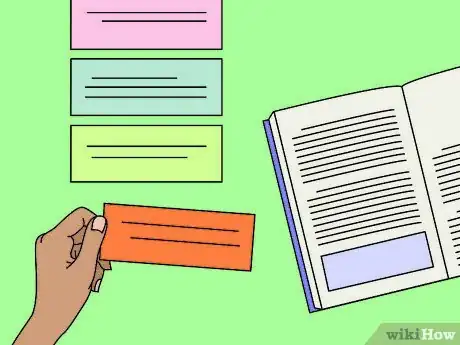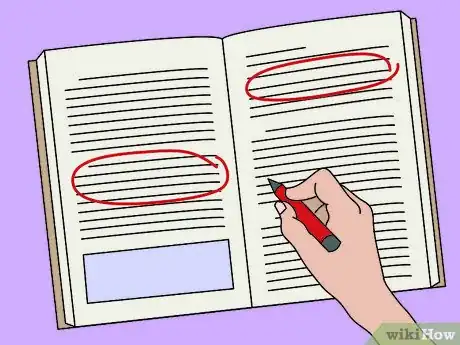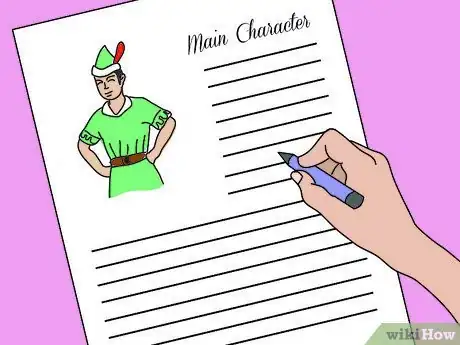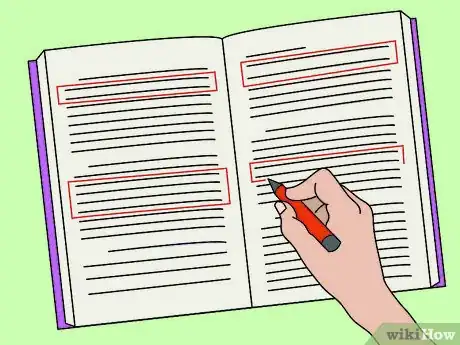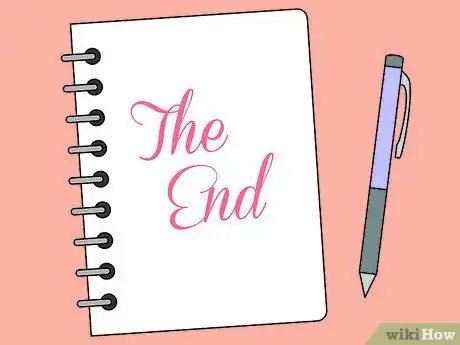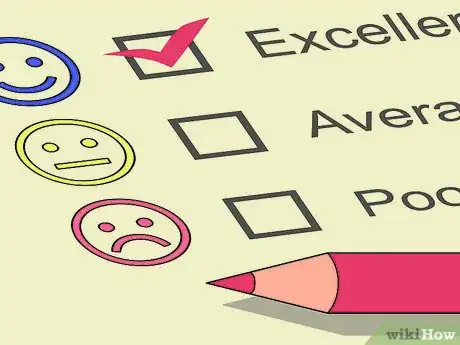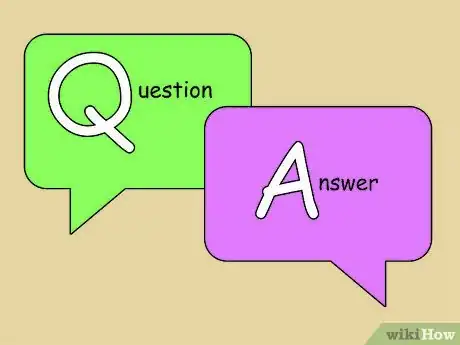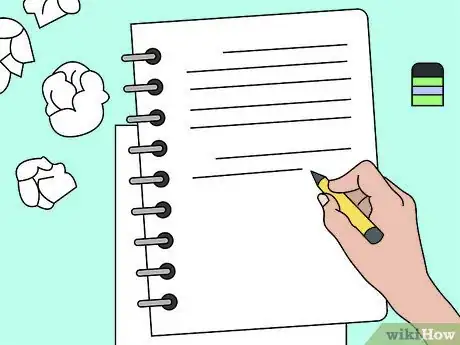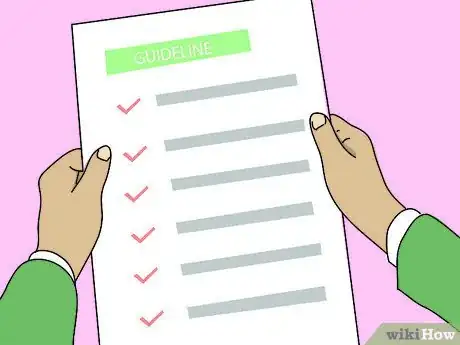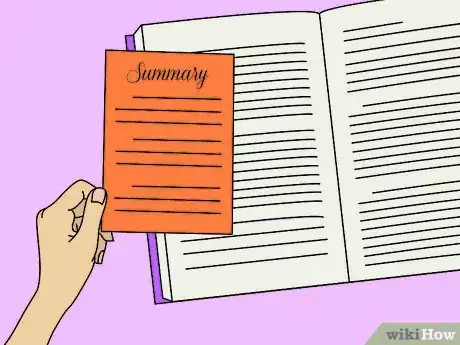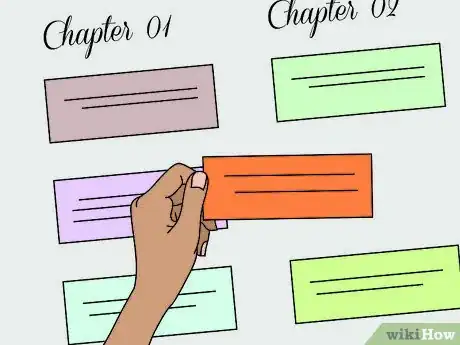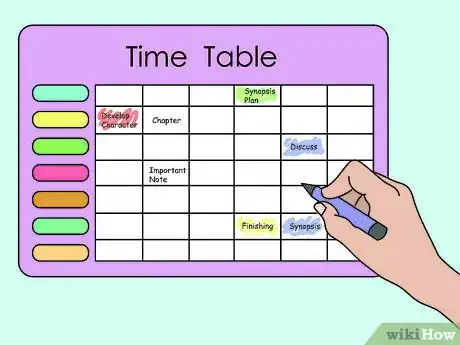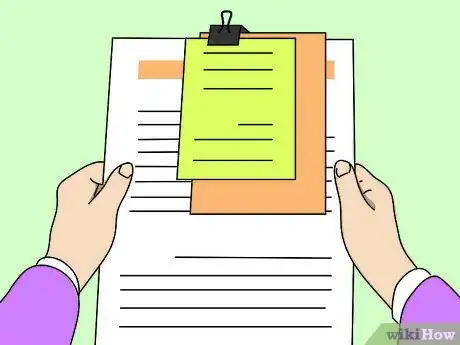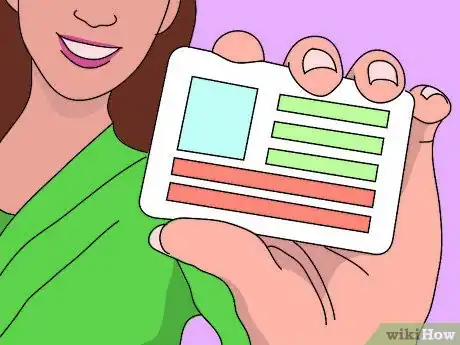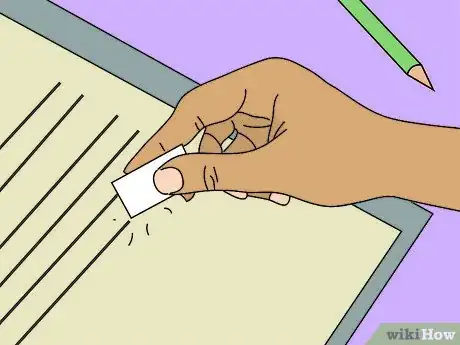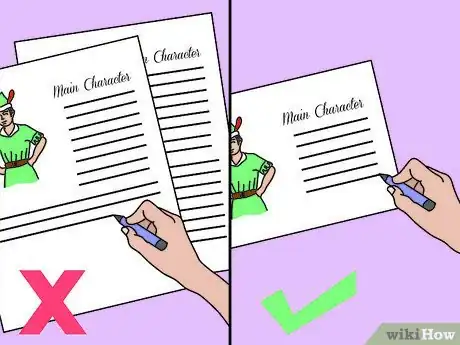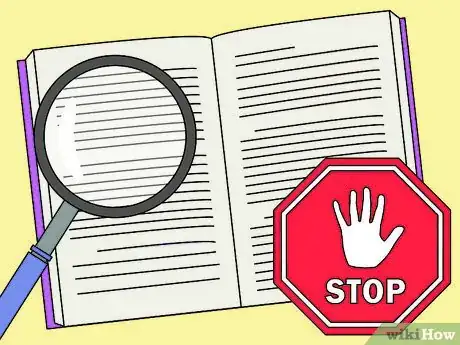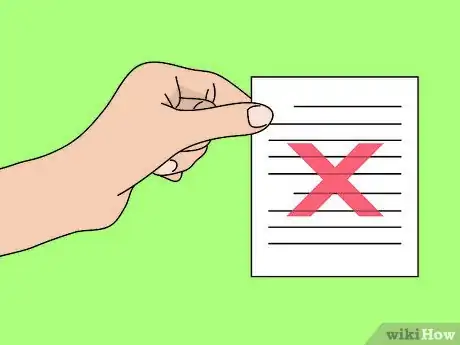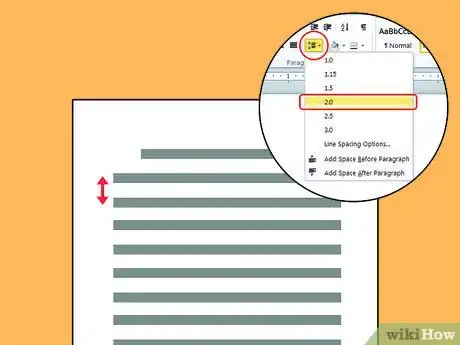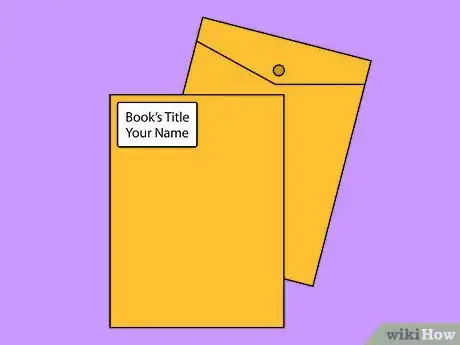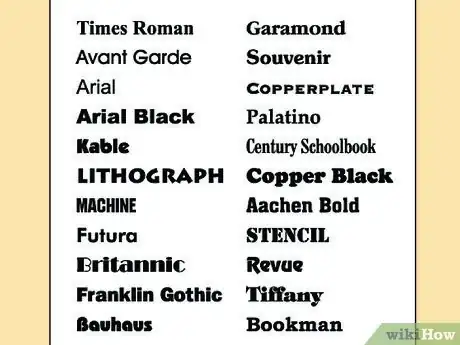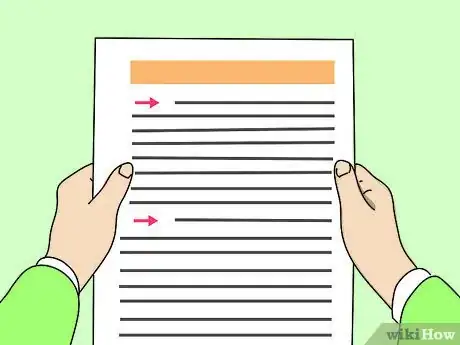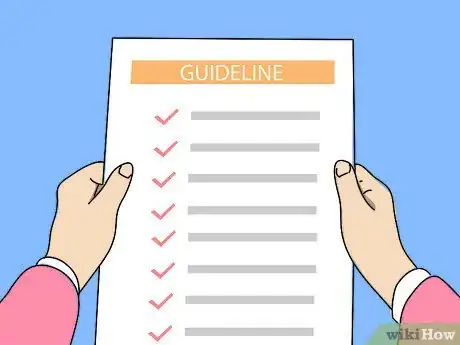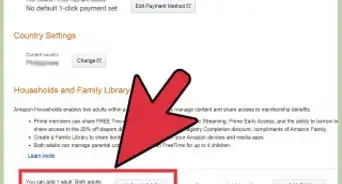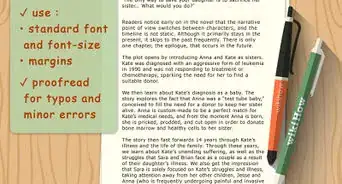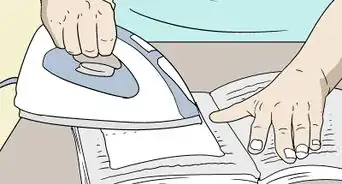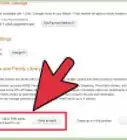This article was co-authored by Megan Morgan, PhD. Megan Morgan is a Graduate Program Academic Advisor in the School of Public & International Affairs at the University of Georgia. She earned her PhD in English from the University of Georgia in 2015.
There are 8 references cited in this article, which can be found at the bottom of the page.
This article has been viewed 29,472 times.
A book synopsis is a brief summary of a book’s storyline or content. Literary agents and publishers often require writers to submit a synopsis to pitch their work. The challenge of sitting down to condense an entire book down to a few paragraphs or pages is a daunting one, and there is no single way to write a good synopsis. Nevertheless, you can take specific steps to produce an impressive synopsis that will capture readers’ attention and leave them excited to enjoy the entire book.
Steps
Crafting a Synopsis for a Novel
-
1Establish the premise. Although the synopsis is a very brief snapshot of a much larger work, you still need to take the time to establish the overall premise of the novel and include any essential information the reader would need to understand the story.[1]
- Imagine someone is reading the synopsis before the book. What information is critical to include? Are there specific details about the setting of the novel or the world you’ve created that a reader would need to understand?
- Remember, you are trying to draw the reader into the story, so include a few interesting details that help people visualize where and when this is occurring.
-
2Emphasize the conflict in the novel. It can be overwhelming trying to decide what to include in a synopsis, but a good rule of thumb is to identify and outline the main conflict in the story.[2]
- What struggles does the protagonist or main character confront in the book?
- Are there specific obstacles the characters encounter that you should mention in the synopsis?
- What will happen if the protagonist fails or stumbles?
Advertisement -
3Show character development. While it can be frustrating to try and condense a novel’s worth of awesome character development into a synopsis, many literary agents report that they want synopses to demonstrate how the main character changes over the course of the novel.[3]
- Try to keep the main characters from appearing one-dimensional by showing how they react to different situations. Even though you don’t have a lot of space in the synopsis, you can still provide readers with a sense of who the characters are and how they change over the course of the story.
-
4Outline the plot. Because the synopsis is designed to be a summary of the book, you will need to outline the plot of your novel and give a sense of the novel’s narrative direction.[4]
- It can be hard not to get bogged down in details, but a good place to start is by including a brief summary (1 to 2 sentences) of each chapter. Then, try to link and connect these summaries together.[5]
- You won’t be able to include all plot details, so try to identify the ones that are critical to understanding the book. Ask yourself if the ending would still make sense without that detail. If so, then leave it out of the synopsis.[6]
-
5Be clear about the book’s ending. You might be reluctant to spoil the ending, but a synopsis should be clear about the novel’s ending and ultimate resolution.[7] [8]
- Literary agents want to know how you resolve the conflict in the novel and tie up your story.
- Don't worry. If your story is published, the synopsis won’t be included on the back of the book and spoil the story for readers.
-
6Review your synopsis. It’s important for you to review the synopsis, and also ask other people to review the synopsis. The more feedback you seek from others, the clearer you can make your synopsis.
- It can be helpful to read your synopsis out loud because you will be better able to notice grammar mistakes and find opportunities to improve the wording. Your brain has to process the information in a different way when you read aloud, and you often notice mistakes and problems you previously overlooked.[9]
- Ask friends, family members, or colleagues who have not read the book yet or aren’t familiar with what you are working on to read the synopsis. They will be able to provide a more objective view, and let you know if the synopsis makes sense to them and draws them into the story.
-
7Make sure your synopsis answers the important questions. Before you submit your synopsis, make sure it provides an answer to the following critical questions:[10]
- Who is the central character in the book?
- What are they looking for, searching for, or trying to achieve?
- Who or what makes their search, quest, or journey difficult?
- What ends up happening?
-
8Keep practicing. Many writers report that synopses are among the most difficult pieces to write because they are trying to distill an entire book’s worth of material into a few paragraphs. Fortunately, however, the more often you practice writing synopses, the better you will be at this exercise.[11]
- To get practice writing synopses, try working on one for a classic book or try writing a synopsis of a book you just read. Sometimes it is easier to start out practicing on a book that you haven’t spent hours, days, or years preparing.
Writing a Synopsis for a Non-Fiction Book
-
1Follow any specific guidelines provided. If you are working with an agent or a specific publisher, make sure you ask them about or familiarize yourself with their specific guidelines for the synopsis. You want to make sure you format it and submit it the way they want so it gets the best reception possible.[12]
- If you are unsure, ask the agent or publisher about length, formatting, and style.
- Even if this is an assignment for a class, make sure you adhere to the instructions or guidelines your teacher provided.
-
2Include a brief summary of the book. Just like a synopsis for a work of fiction, you need to offer a brief summary of the content.[13]
- Focus on clearly articulating your argument, and explain why the book should be published. Make an argument for why your book is important in some way.
-
3Outline the structure of the work. Even if you have not finished the book, you should still be able to provide a clear outline of its structure in the synopsis. Provide a chapter breakdown with temporary titles for each chapter, which will give an agent or publisher a good idea of the direction the work is headed.[14]
- You can also include a short description (1 to 2 sentences) of each chapter.
-
4Identify how your book is different from the competition. In the synopsis, explain what sets your book apart from existing material on the subject. Discuss how you bring something different to the table.[15] [16]
- For example, does your book offer a unique perspective or a new way of thinking about a topic?
- List the leading authors and publications in the field and be clear about how your project is original.
- Also, describe why you are the author best suited or qualified to produce this work.
-
5Discuss the market for the book. A publisher will look at your book and try to determine its place in the market and the intended audience. Take space in the synopsis to discuss where you see the book fitting in to the existing market.[17]
- Include information on the section of the bookstore or bookshop you see your book being stocked in. This helps publishers assess whether the book will have an audience and how it should be marketed.
- Are there groups you think would have a definite interest in this book? For example, would this be used in specific college courses, or are there events such as historical anniversaries that the book could be linked to and marketed around?[18]
-
6Address your time table. Many nonfiction books are accepted while still being written, but you should provide a clear time table of your anticipated progress in the synopsis.[19]
- Discuss how much is currently completed, and give an estimate of when you expect to have a manuscript prepared.
-
7Provide additional details. Include other pertinent details in the synopsis, such as an estimated word count and information about whether you will need illustrations. The more information you include about the structure and format of the book, the easier it will be for a publisher to determine if they would like to take the project on.[20]
-
8Promote your credentials. To strengthen your synopsis, share the interesting and unique credentials that helped you write the book.[21]
- While education and training are important things to mention, also think about whether there are parts of your background or life that publishers and readers may find interesting.
-
9Ask for feedback. Like any writing activity, sharing a draft of your synopsis with others can help you improve your wording and make the synopsis clearer and more compelling. Ask friends, family, and colleagues for feedback on a draft.
- You do not have to be a specialist in the field to determine if a synopsis is interesting and readable, so don’t worry about finding someone who is an expert on the subject matter you write about.
Avoiding Common Mistakes
-
1Don’t write the synopsis from the perspective of your main character. The synopsis should be written from a third-person perspective rather than from the point of view of your main characters. Synopses are also usually written in present rather than past tense.[22]
- For example, instead of writing “I went to the beach house every summer,” write, “Susan travels to the beach every summer.”
-
2Pare down your wording. Synopses are meant to be brief, and wordiness is a common mistake in synopses. Although it can feel painful to cut out dialogue and trim down wording, it will help you create a more sleek and readable synopsis.[23]
- Ask yourself if all the details are really relevant to the synopsis or if they can be left out. If your reader can still get a good idea of what the book is about without those details, scrap them.
- Dialogue is usually unnecessary in the synopsis, but if you do include it, keep it to a minimum and make sure it is used to reveal an important turning point or character development.
- Don’t worry about making your prose lyrical or elaborate. It will take up too much space, and you should focus your energy on using precise wording and providing a clear summary of your book. When you re-read your synopsis, ask yourself if there is a clearer or more precise word you could use in place of the one you currently included.
-
3Avoid revealing too many character details or introducing secondary characters. You’ve probably spent a lot of time developing your characters and their backstories, but the synopsis is not the place to explore all of these details or introduce every character in your book.[24] [25]
- Include just enough detail to make the characters interesting and establish how they are connected or related. In the synopsis, a few phrases are typically sufficient to explain who a character is and where they come from.
-
4Stop analyzing or interpreting the book’s themes. The synopsis is intended to be a summary or brief overview of the book, so do not feel pressured to engage in literary analysis or interpretation of the book’s themes or hidden meanings. The synopsis is not the place for this kind of examination.
-
5Don’t leave unanswered or rhetorical questions in the synopsis. Although you might feel tempted to build suspense and leave certain questions unanswered or ask rhetorical questions, these will distract the reader from your synopsis.[26]
- For example, don’t write, “Will Tyler ever identify his mother’s killer?” Instead of posing this question, your synopsis should provide an answer.
-
6Avoid writing a synopsis that is simply a basic plot summary. You want your synopsis to draw readers in and make them want to read the entire work. Offering a basic play-by-play of the story will make the reader feel like they are reviewing a dry, technical manual.[27]
- Instead try to inject more emotion and detail into the synopsis by giving insight into how the characters feel.
- If you find yourself writing things such as “this happened, then this happened, and finally, this occurred,” it’s time to take a break and revisit the synopsis when you are feeling fresh. You don’t want the synopsis to feel like a boring rundown of a sports game.
- Some writers suggest pretending you are describing the book to your friends in the same way you would describe an exciting movie. Omit the boring or trivial details and focus on the highlights.[28]
Formatting a Book Synopsis
-
1Double space the synopsis. If the synopsis is longer than one page in length, double space the document. It will be easier for the literary agent to read.
-
2Be sure to include your book’s title and your name. When you are rushing to finish your synopsis, it can be easy to forget including the title of your book and your name. Make sure these details are on each page of the document in the upper left-hand corner.
- If a literary agent likes your synopsis, you want to make sure they know who to contact.
-
3Use a standard font. While you might feel like you should use a more interesting font, it's best to stick with a standard one such as Times New Roman that is easy to read and will open on a variety of devices.
- If you typed your book in a certain font, stick with the same font for the synopsis so they match. You might also be submitting sample chapters, and the documents will look like they are part of the same package or go together.
-
4Indent paragraphs. Although the synopsis is a shorter document, you do not want it to appear like you wrote it in a stream of consciousness. To prevent this from happening, indent paragraphs so your synopsis looks neat and well-organized.
-
5Pay attention to length guidelines. Length requirements of synopses vary depending on the literary agent or publishing company. Make sure you follow the guidelines you are given or ask the agent or publisher you are working with what they would prefer.
- Some writers recommend starting with a 5 page synopsis, and then condensing this document and trimming it down as needed.
- Be prepared for different length requirements ahead of time by having a 1 page and 3 page synopsis on hand. Even if the length requirements are slightly different, you should be able to easily adapt a 1 page or 3 page version.[29]
References
- ↑ http://carlywatters.com/2013/11/04/how-to-write-a-book-synopsis/
- ↑ http://carlywatters.com/2013/11/04/how-to-write-a-book-synopsis/
- ↑ http://carlywatters.com/2013/11/04/how-to-write-a-book-synopsis/
- ↑ http://carlywatters.com/2013/11/04/how-to-write-a-book-synopsis/
- ↑ http://www.marissameyer.com/blogtype/6-steps-for-writing-a-book-synopsis/
- ↑ https://www.janefriedman.com/how-to-write-a-novel-synopsis/
- ↑ http://carlywatters.com/2013/11/04/how-to-write-a-book-synopsis/
- ↑ https://www.janefriedman.com/how-to-write-a-novel-synopsis/
- ↑ http://writingcenter.unc.edu/handouts/reading-aloud/
- ↑ https://www.writersandartists.co.uk/writers/advice/34/preparing-for-submission/query-letter-and-synopsis/a-synopsis
- ↑ https://www.writersandartists.co.uk/writers/advice/60/preparing-for-submission/query-letter-and-synopsis/what-is-a-synopsis-and-why-are-they-so-hard-to-write
- ↑ https://literaryconsultancy.co.uk/media/press-publicity/how-to-write-a-synopsis/
- ↑ https://literaryconsultancy.co.uk/media/press-publicity/how-to-write-a-synopsis/
- ↑ https://literaryconsultancy.co.uk/media/press-publicity/how-to-write-a-synopsis/
- ↑ https://www.writersandartists.co.uk/writers/advice/34/preparing-for-submission/query-letter-and-synopsis/a-synopsis
- ↑ https://literaryconsultancy.co.uk/media/press-publicity/how-to-write-a-synopsis/
- ↑ https://www.writersandartists.co.uk/writers/advice/34/preparing-for-submission/query-letter-and-synopsis/a-synopsis
- ↑ https://literaryconsultancy.co.uk/media/press-publicity/how-to-write-a-synopsis/
- ↑ https://www.writersandartists.co.uk/writers/advice/34/preparing-for-submission/query-letter-and-synopsis/a-synopsis
- ↑ https://literaryconsultancy.co.uk/media/press-publicity/how-to-write-a-synopsis/
- ↑ https://www.writersandartists.co.uk/writers/advice/34/preparing-for-submission/query-letter-and-synopsis/a-synopsis
- ↑ http://carlywatters.com/2013/11/04/how-to-write-a-book-synopsis/
- ↑ https://www.janefriedman.com/how-to-write-a-novel-synopsis/
- ↑ https://www.janefriedman.com/how-to-write-a-novel-synopsis/
- ↑ http://www.huffingtonpost.com/holly-robinson/book-synopsis-tips_b_2426724.html
- ↑ https://www.janefriedman.com/how-to-write-a-novel-synopsis/
- ↑ https://www.janefriedman.com/how-to-write-a-novel-synopsis/
- ↑ http://www.huffingtonpost.com/holly-robinson/book-synopsis-tips_b_2426724.html
- ↑ http://carlywatters.com/2013/11/04/how-to-write-a-book-synopsis/
